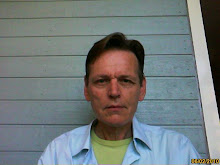Most of the current controversies associated with science revolve around the vastly different reactions people both within the scientific community and outside it have, not to the strange features of the universe that we can observe for ourselves, but rather to those features we cannot observe.
In my own field of physics, theorists hotly debate the possible existence of an underlying mathematical beauty associated with a host of new dimensions that may or may not exist in nature.
School boards, legislatures and evangelists hotly debate the possible existence of an underlying purpose to nature that similarly may or may not exist.
It seems that humans are hard-wired to yearn for new realms well beyond the reach of our senses into which we can escape, if only with our minds. It is possible that we need to rely on such possibilities or the world of our experience would become intolerable.
Certainly science has, in the past century, validated the notion that what we see is far from all there is. We cannot directly see electrons but we now know that material objects we can hold in our hand are actually, at an atomic level, largely empty space, and that it is the electric fields associated with the electrons that keep them from falling through our hands.
And when we peer into the darkness of the night sky, within the size of the spot covered up by a dime held at arm's length, we now know that over 100,000 galaxies more or less like our own are hiding. And we know most contain over 100 billion stars, many housing solar systems, and around some of them may exist intelligent life forms whose existence may, too, remain forever hidden from us.
One hundred years ago, Albert Einstein began to unveil the hidden nature of space and time, and after working for another full decade he discovered that space itself is dynamic. It can curve and bend in response to matter and energy, and ultimately even the calm peace of the night sky, suggesting an eternal universe, is itself an illusion. Distant galaxies are being carried away by an expanding space, just as a swimmer at rest in the water can nevertheless get carried away from shore by a strong current.
Thus, it is perhaps not too surprising that when one approaches the limits of our knowledge, theologians and scientists alike tend to appeal to new hidden universes for, respectively, either redemption or understanding.
The apparent complexity of our universe has compelled some evangelists, and some school boards, to argue that the natural laws we have unraveled over the past four centuries cannot be enough on their own to explain the diversity of the phenomena we observe around us, including the remarkable diversity of life on earth.
For very different reasons, but still without a shred of empirical evidence, a generation of theoretical physicists has speculated that the four dimensions of our experience may themselves be just a grand illusion - the tip of a cosmic iceberg.
String theory, yet to have any real successes in explaining or predicting anything measurable, has nevertheless become a fixture in the public lexicon, and the elaborate and surprising mathematical framework that has resulted from over three decades of theoretical study has been enough for some to argue that even a thus-far empirically impotent idea must describe reality.
Further, it has now been proposed that the extra dimensions of string theory may not even be microscopically small, which has been the long accepted mathematical trick used by advocates to explain why we may not yet detect them.
Instead, they could be large enough to house entire other universes with potentially different laws of physics, and perhaps even objects that, like the eight-dimensional beings in a Buckaroo Banzai story, might leak into our own dimensions.
I wouldn't bet on their existence, but the fact that such potentially infinite spaces could exist and still be effectively hidden in our world is nevertheless remarkable.
Whatever one thinks about all of these ruminations about hidden realities, there is an important difference - at least I hope there is - between the scientists who currently speculate about extra dimensions and those whose beliefs cause them to insist that life can only be understood by going beyond the confines of the natural world.
Scientists know that without experimental vindication their proposals are likely to wither. Moreover, a single definitive "null experiment," like the Michelson-Morley experiment in 1887 that dispensed with the long-sought-after ether, could sweep away the whole idea.
Religious belief that the universe is the handiwork of an all-powerful being is not subject to refutation. This sort of reliance on faith may itself have an evolutionary basis. There has been talk of a "god gene": the idea of an early advantage in the struggle for survival for those endowed with a belief in a hidden patrimony that gives order, purpose and meaning to the universe we experience.
Does the same evolutionary predilection lead physicists and mathematicians to see beauty in the unobserved, or unobservable? Does the longstanding human love affair with extra dimensions reflect something fundamental about the way we think, rather than about the world in which we live?
The mathematician Hermann Weyl was quoted as having said not long before he died, "My work always tried to unite the true with the beautiful, but when I had to choose one or the other, I usually chose the beautiful."
Mathematicians, artists and writers may choose beauty over truth. Scientists can only hope that we do not have to make the choice.

No comments:
Post a Comment